Ed Wagemann's Blog: who will save rock n roll?
November 9, 2023
what the fuck happened to liz phair?

I was once a huge admirer of Liz Phair… but that was long ago. Recently I picked up her memoir titled Horror Stories. The writing reminded me of the kind of pap that I saw in a writing class I took in my early 20s. There was a bunch of middle-aged women in the class who were trying to justify their existence by writing poorly about it… The formula basically goes like this:
1) start off with a scene in your life
2) give some profound thought or feeling you had concerning that scene
3) flashback to provide backstory
4) return to the original scene with more profound thoughts and feelings and/or self-reflection that concludes by explaining how this episode in your life has taught you something or made you evolve as a person, etc, etc.
It’s all a bit ‘meh’ or sometimes even a bit pathetic, but it is a formula that has stuck.
But seeing Liz Phair resort to this lameness is so strange because her first album, Exile in Guyville (a nod to both the Rolling Stones and Urge Overkill) was sooo off the charts-fucking amazing. It was truly touched by genius. Everything about it was jaw-dropping. I was 24 years old when it came out in 1993, and I was living in Wicker Park (the Chicago neighborhood that was the impetus for the ‘Guyville’ she sang about). The album became my soundtrack for many months.
Predictably, Phair was never able to recapture the magic of that first album. Her second album had a couple of nice cuts on it, but after that, it was a quick nose-dive into pop mediocrity. Which kinda pissed a lot of people off. They accused her of selling out — which was true. But lots of people sell out. The problem with Phair selling out though is that she created such a brilliant and original spark at first. You know, it’s like ‘What the fuck happened?”
I’m not gonna lie. One of the reasons I picked up ‘Horror Stories’ is because I was hoping I would get some insight into that question; “What the fuck happened?” What happened that led to such an amazing album in the first place? The album is just too amazing to have simply been a fluke. So what happened to prevent her from ever coming close to creating such greatness ever again? ‘Horror Stories’ doesn’t approach these questions in any direct sense. These great songs on her first album seemed to have arrived by osmosis and then were crafted by the raw power of workingclass musicians and studio rats who created a work of art that has few peers. It was a perfect storm — and words in a memoir aren’t really going to be able to fully explain that.
However… Phair’s narrative does give some insight into these questions. Liz Phair certainly has a creative streak, she seems bravely curious to explore situations of confrontation or conflict. But at the same time, her personality seems to ratchet up from episodes of neurotic doutbt to extreme confidence and then back again. And that might explain how she was able to create something so real and raw and amazing only to turn around and sell out for stability and then tailspin forever into the abyss of mediocrity.
Overall this book, as far as memoirs go, was a bit milktoast. Nothing special. Phair didn’t approach the subject matter of the Big Story of her life — instead deciding to dwell in the sea of middle-aged ladies who relfect on circumstances that happen beyond their control — a black out in New York City, a break-in to her college house, the death of a grandma, the chance meeting of a childhood friend who was crippled in an accident. There’s nothing that a billion other middle-aged ladies haven’t already written about… and I am still left wondering, What the fuck happened?
[image error]November 4, 2023
Now and Then… and then again: ‘new' Beatle song is another victory for AI in the fight over…
I’m predicting more new “last-ever Beatle songs” coming down the line. This ‘new’ Beatles song “Now and Then” was constructed on computers with MAL (machine assisted learning) software that utilizes a tape that John Lennon made while he was basically just screwing around on a piano nearly 50 years ago. There are hours and hours of these “lost” snippets in the Beatles vaults. There is even a podcast dedicated to them, called “Almost Beatles Songs”. Beatle Paul McCartney, producer Giles Martin, or even Ringo or Yoko, could take any of these snippets and use computer AI to produce an entire album’s worth of “new” songs.
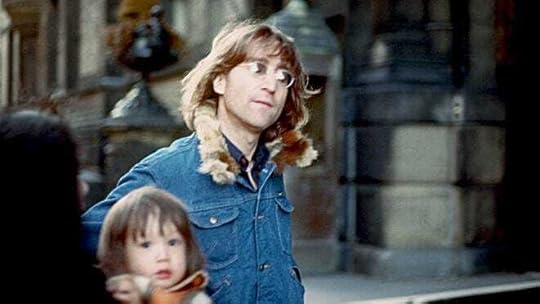
This latest new song “Now and Then” (similar to the last new Beatles song “Free as a Bird”) sounds a lot like a Paul McCartney song that is trying to be a Beatles song — but it has samples of John Lennon’s voice in it. The song itself is easy to listen to, but it’s also easy to dismiss. Like most commercial music today, it is soulless. But the catch here is that McCartney and producer Giles Martin attempt to inject authenticity into the song by exploiting Lennon’s 1977 tape of himself singing at a piano. The result is a song that is very plastic. It’s plastic soul, or should I say Rubber Soul!
“Now and Then” lacks the magical mystery chemistry that took place when John, Paul, George, and Ringo collaborated face to face, side by side, all together, jamming in a studio or dicking around with their instruments. That was the magic of the Beatles, not some soulless piecemeal, bleeps and bloops constructed by AI-manipulated computer programs. This song is not an authentic Beatles song in any sense of the word. In fact, it’s the opposite — it represents everything that is fake in the music-making industry today.
And in the end… McCartney’s Glass Onion attempt to Get Back is All Too Much. It sounds like muzak to my ears and he should have just Let it Be. I Imagine that if Lennon were alive today, he’d probably say “Just give me some truth!”
[image error]Now and Then… and then again
I’m predicting more new “last-ever Beatle songs” coming down the line. This ‘new’ Beatles song “Now and Then” was constructed on computers from a tape that Lennon made while he was basically just fucking around. There are hours and hours of these “lost” snippets in the Beatle vaults. There is even a podcast dedicated to them, called “Almost Beatle Songs”. McCartney, Giles Martin, or even Ringo or Yoko, could take any of these snippets and use computer AI and product an entire album’s worth of “new” songs.

This latest new song “Now and Then” (similar to the last new Beatles song “Free as a Bird”) sounds just like a Paul McCartney song that is trying to be a Beatles song — and using samples of John Lennon’s voice in it.
The song itself is easy to listen to, but it’s also easy to dismiss. Like most commercial music today, it is soulless. But the catch here is that McCartney and producer Giles Martin attempt to inject soul into the song by exploiting Lennon’s 1978 tape of himself singing at a piano. The result is a song that is very plastic. It’s plastic soul, or should I say Rubber Soul!
The thing that this song most obviously lacks is the magical chemistry that took place when John, Paul, George, and Ringo were face to face, side by side, all together, jamming in a studio or dicking around with their instruments. That was the magic of the Beatles, not some soulless piecemeal, bleeps and bloops constructed by AI-manipulated computer programs. This song is not an authentic Beatles song in any sense of the word. In fact, it’s the opposite — it represents everything that is fake in the music-making industry today. Just give me some truth!
[image error]October 31, 2023
Paul Weller’s 1980 ode to self-entertainment
Paul Weller of the Jam wrote the song “That’s Entertainment” in about ten minutes — he said the song basically wrote itself. This makes the lyrics all that more amazing because it’s a song that explains something — a sentiment, a feeling — that is universal but that not many folks take the time to realize (especially today, with our 24/7/365 distraction devices we all carry around with us at all times).

The song, which popped into our multiverse over 40 years ago, is about a mood that is difficult to relate to in our first-world reality of 2023, for the lyrics describe the simplicity of just going outside and hanging out with yourself, having a little moment, some free time, and being present in that moment, experiencing the moment by simply immersing yourself in your surroundings. How often does this even happen in today’s first-world reality? How often are you called upon to entertain yourself with the realities of everyday life?
Without cell phones in existence, this happened quite often in 1980. It was a necessity, and this song conveys exactly what that was like living in 1980. The song is about having to find entertainment — happiness — via your own thoughts and experiences and observations from your place in the world.

One way the song hits this theme is sonically. There is an intensity to the song as if Weller and the Jam are calling out to the future — sending out an SOS to future generations to rescue them from their situation in 1980, for they are at the end of their rope. It seems as though the technology of 1980 is not enough for them. They are bored and they are pleading for humanity — or aliens or someone — to come up with something to entertain them, maybe some handheld device that can access every movie, tv show, book, magazine article, recorded song, and amateur blooper footage ever shot. Weller strikes his acoustic guitar in a frenzy that is both beautiful and brutal, as behind him, the bass is frickin’ tight and ballsy, and the drums that are seemingly non-existent, occasionally give a little knock here and there. Weller’s voice is vicious with a frenetic, urgent approach that only he — and he alone throughout the history of recorded music — has mastered. The harmonizing vocals behind him are sadly beautiful and catchy and are in touch with a certain tone of loneliness that only seems possible from a 20-something first-world citizen living in 1980.
It all comes together in a unique, urgent way until, in the midst of this simple, yet brilliantly complex song, just past the halfway mark, as if we are time traveling, a backward guitar comes in. This moment of ear candy is just a little icing on the cake. Yes! And we know then that this song is the perfect post-punk pop song. Every single element of it is perfect and iconic. There’s not one thing to add or subtract that would make this any better. It’s a slice of heaven. It’s 1980. It’s entertainment.
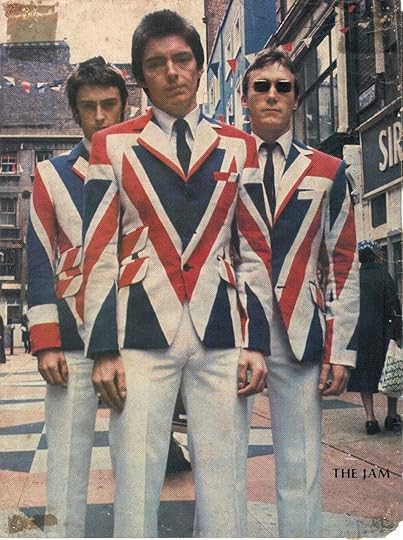
lyrics to “That’s Entertainment”:
A police car and a screaming siren
A pneumatic drill and ripped up concrete
A baby wailing and stray dog howling
The screech of brakes and lamp light blinking
That’s entertainment
That’s entertainment
A smash of glass and a rumble of boots
An electric train and a ripped up phone booth
Paint splattered walls and the cry of a tomcat
Lights going out and a kick in the balls
I say, that’s entertainment
That’s entertainment
Days of speed and slow time Mondays
Pissing down with rain on a boring Wednesday
Watching the news and not eating your tea
A freezing cold flat and damp on the walls
I say that’s entertainment
That’s entertainment
Waking up at 6 a.m. on a cool warm morning
Opening the windows and breathing in petrol
An amateur band rehearsing in a nearby yard
Watching the telly and thinking about your holidays
That’s entertainment
That’s entertainment
Waking up from bad dreams and smoking cigarettes
Cuddling a warm girl and smelling stale perfume
A hot summer’s day and sticky black tarmac
Feeding ducks in the park and wishing you were far away
That’s entertainment
That’s entertainment
Two lovers kissing amongst the scream of midnight
Two lovers missing the tranquility of solitude
Getting a cab and travelling on buses
Reading the graffiti about slashed seat affairs
I say that’s entertainment
That’s entertainment
reading the graffiti about slashed seat affairs
Paul Weller of the Jam wrote the song “That’s Entertainment” in about ten minutes — he said the song basically wrote itself. This makes the lyrics all that more amazing because it’s a song that explains something — a sentiment, a feeling — that is universal but that not many folks take the time to realize (especially today, with our 24/7/365 distraction devices we all carry around with us at all times).

The song, which popped into our multiverse over 40 years ago, is about a mood that is difficult to relate to in our first-world reality of 2023, for the lyrics describe the simplicity of just going outside and hanging out with yourself, having a little moment, some free time, and being present in that moment, experiencing the moment by simply immersing yourself in your surroundings. How often does this even happen in today’s first-world reality? How often are you called upon to entertain yourself with the realities of everyday life?
Without cell phones, this happened quite often in 1980. It was a necessity, and this song conveys exactly what that was like living in 1980. The song is about having to find entertainment — happiness — via your own thoughts and experiences and observations from your place in the world.

One way the song hits this theme is sonically. There is an intensity to the song as if Weller and the Jam are calling out to the future — sending out an SOS to future generations to rescue them from their situation in 1980, for they are at the end of their rope. It seems as though the technology of 1980 is not enough for them. They are bored and they are pleading for humanity — or aliens or someone — to come up with something to entertain them, maybe some handheld device that can access every movie, tv show, book, magazine article, recorded song, and amateur blooper footage ever shot. Weller strikes his acoustic guitar in a frenzy that is both beautiful and brutal, as behind him, the bass is frickin’ tight and ballsy, and the drums that are seemingly non-existent, occasionally give a little knock here and there. Weller’s voice is vicious with a frenetic, urgent approach that only he — and he alone throughout the history of recorded music — has mastered. The harmonizing vocals behind him are sadly beautiful and catchy and are in touch with a certain tone of loneliness that only seems possible from a 20-something first-world citizen living in 1980.
It all comes together in a unique, urgent way until, in the midst of this simple, yet brilliantly complex song, just past the halfway mark, as if we are time traveling, a backward guitar comes in. This moment of ear candy is just a little icing on the cake. Yes! And we know then that this song is the perfect post-punk pop song. Every single element of it is perfect and iconic. There’s not one thing to add or subtract that would make this any better. It’s a slice of heaven. It’s 1980. It’s entertainment.

lyrics to “That’s Entertainment”:
A police car and a screaming siren
A pneumatic drill and ripped up concrete
A baby wailing and stray dog howling
The screech of brakes and lamp light blinking
That’s entertainment
That’s entertainment
A smash of glass and a rumble of boots
An electric train and a ripped up phone booth
Paint splattered walls and the cry of a tomcat
Lights going out and a kick in the balls
I say, that’s entertainment
That’s entertainment
Days of speed and slow time Mondays
Pissing down with rain on a boring Wednesday
Watching the news and not eating your tea
A freezing cold flat and damp on the walls
I say that’s entertainment
That’s entertainment
Waking up at 6 a.m. on a cool warm morning
Opening the windows and breathing in petrol
An amateur band rehearsing in a nearby yard
Watching the telly and thinking about your holidays
That’s entertainment
That’s entertainment
Waking up from bad dreams and smoking cigarettes
Cuddling a warm girl and smelling stale perfume
A hot summer’s day and sticky black tarmac
Feeding ducks in the park and wishing you were far away
That’s entertainment
That’s entertainment
Two lovers kissing amongst the scream of midnight
Two lovers missing the tranquility of solitude
Getting a cab and travelling on buses
Reading the graffiti about slashed seat affairs
I say that’s entertainment
That’s entertainment
October 23, 2023
bands that sound like Led Zeppelin
Early in their career Led Zep was blasted by critics for ripping off songs and riffs from American Blues artists without giving those artists their due. The band just shrugged off this criticism. I mean, Robert Plant was literally a 20-year-old kid at the time. Does anyone really think he was trying to rip off his heroes? He was just trying to enjoy himself and catch some tail. Ironically though, in the decades since their inception, Led Zep’s sound has been ripped off more than any other band in Rock history. But Page and Plant and Jones and Bonham have cooly shrugged off those emulations of their sound throughout the years. So here are 21 bands that fit that bill:
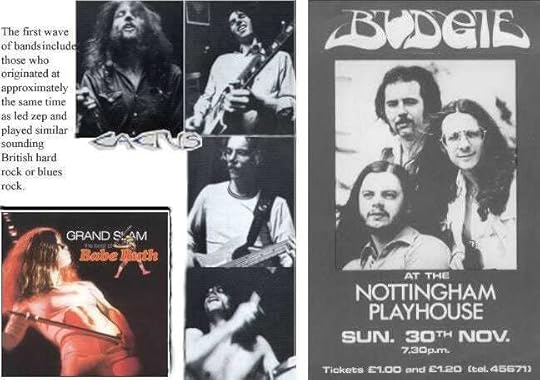

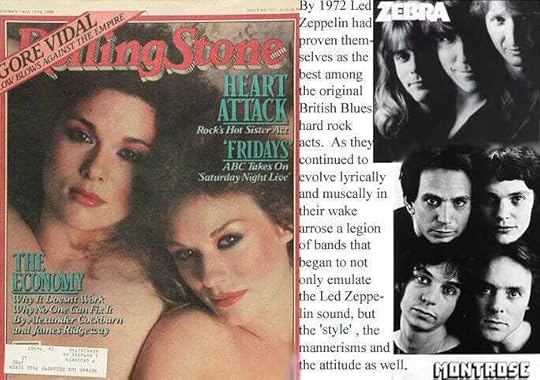
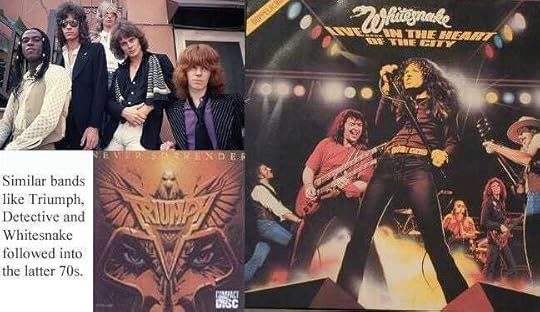
The Third Wave: By the time the term “Classic Rock” took hold in the 80s the formula for copying Led Zep had been set. It focused on the more commercial songs from Led Zep like the riff-heavy “Rock and Roll” and the Power balladry of “All of My Love.” Bands like Fastway, Great White and Kingdom Clone…erm, I mean Kingdom Come are some examples of this.
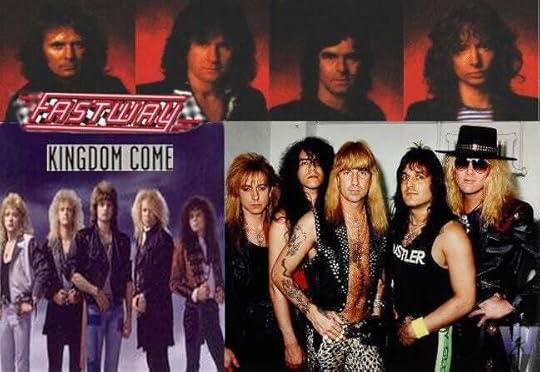
The Grunge-era:
Dread Zeppelin, The Tea Party, Soundgarden:
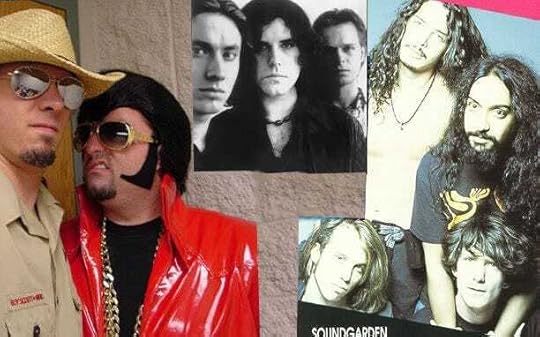
The naughty noughties:

Who’s Zooming Who?

Here’s a list of songs that Led Zep allegedly stole from:
~ “Babe I’m Gonna Leave You” — A folk song by Anne Bredon, this was originally credited as “traditional, arranged by Jimmy Page,” then “words and music by Jimmy Page,” and then, following legal action, “Bredon/Page/Plant.”
~ “Black Mountain Side” — uncredited version of a traditional folk tune previously recorded by Bert Jansch.
~ “Bring It On Home” — the first section is an uncredited cover of the Willie Dixon tune (as performed by the impostor Sonny Boy Williamson).
~ “Communication Breakdown” — apparently derived from Eddie Cochran’s “Nervous Breakdown.”
~ “Custard Pie” — uncredited cover of Bukka White’s “Shake ’Em On Down,” with lyrics from Sleepy John Estes’s “Drop Down Daddy.”
~ “Dazed And Confused” — uncredited cover of the Jake Holmes song (see The Above Ground Sound Of Jake Holmes).
~ “Hats Off To (Roy) Harper” — uncredited version of Bukka White’s “Shake ’Em On Down.”
~ “How Many More Times” — Part one is an uncredited cover of the Howlin’ Wolf song (available on numerous compilations). Part two is an uncredited cover of Albert King’s “The Hunter.”
~ “In My Time Of Dying” — uncredited cover of the traditional song (as heard on Bob Dylan’s debut).
~ “The Lemon Song” — uncredited cover of Howlin’ Wolf’s “Killing Floor” — Wolf’s publisher sued Zeppelin in the early 70s and settled out of court.
~ “Moby Dick” — written and first recorded by Sleepy John Estes under the title “The Girl I Love,” and later covered by Bobby Parker.
~ “Nobody’s Fault But Mine” — uncredited cover of the Blind Willie Johnson blues.
~ “Since I’ve Been Lovin’ You” — lyrics are the same as Moby Grape’s “Never,” though the music isn’t similar.
~ “Stairway To Heaven” — the main guitar line is apparently from “Taurus” by Spirit.
~ “White Summer” — uncredited cover of Davey Graham’s “She Moved Through The Fair.”
~ “Whole Lotta Love” — lyrics are from the Willie Dixon blues “You Need Love.”
©2006 Rockism 101. All Rights Reserved
[image error]October 11, 2023
a brief history of synthpop in a nutshell

The Telharmonium
The first synthesizer ever created, came to life by American Thaddeus Cahill in 1895, in a cob-webbed warehouse reminiscent of Dr. Frankenstein’s laboratory. The monster weighed over 200 tons, used the telephone network for amplification, and worked on mechanical motors. Cahill called this machine the Telharmonium and marketed it to hotel owners. He put on well-publicized demonstrations of its use in which a musician (much like an organist in a movie house) would play insouciant music that filled the entire hotel. However, the $200,000 price tag prevented the machine from ever catching on, and by 1950 the very last remaining Telharmonium was dismantled and thrown into the Hudson River (folks were a bit more lax regarding water pollution regulations back in those days).
Technical Manifesto of Futurist Music
In 1911 the Italian composer Balilla Pratella wrote the Technical Manifesto of Futurist Music which insisted music must represent “the spirit of crowds, of great industrial complexes, of trains, of ocean liners, of battle fleets, of automobiles and airplanes.” He also wrote that music must add the cacophony of the industrialized urban landscape (“the machine and the victorious realm of electricity”) to the musical language. Italian Futurists went on to invent music machines like the Howler and the Burster in an attempt to make these sounds.
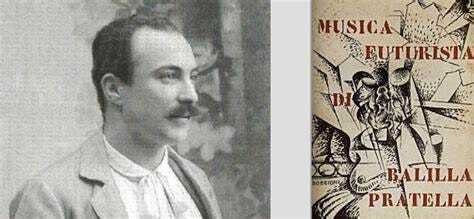
The Minimoog
However, not much advancement was made in the realm of synthesized music after Pratella’s manifesto. In fact, it wasn’t until shortly after the final Telharmonium found its way to the bottom of the Hudson River that a Cornell graduate and theremin kit salesman named Bob Moog developed a synthesizer that would fulfill Pratella’s calling. This machine would eventually become what was called the… [cue the dramatic music]: da-da-dum…The Minimoog!
Zapple
The Beatles, fascinated by Stockhausen, set up a label in which to manifest albums that documented their sonic electronic/synth experimentations. John Lennon had already entered the bizarre electronic noise landscape with the 8-minute “Revolution 9” that appeared on the White Album, so it was no surprise that The Beatles were among the first to put the Minimoog to use when they included it on “Here Comes the Sun” and “Because” from their Abbey Road disc. Also, in 1969 George (Electronic Sound) and John (Unfinished Music №2) both released entire Synth/Electronic albums on their Zapple label.

A Clockwork Orange
Musician Walter Carlos (who had a sex change operation in 1972 and was renamed Wendy Carlos) had worked with Bob Moog creating synth music throughout the ‘60s’. Then in 1969, Carlos recorded an album of synthesized songs by Bach called Switched-On Bach. Carlos went on to record the music for the brilliant soundtrack to Stanley Kubrick’s masterpiece A Clockwork Orange.
Random Fun Fact:
CHICORY TIP’s single “son of my father” is considered the first SynthPop hit, as it went to 1 in the UK in 1972.
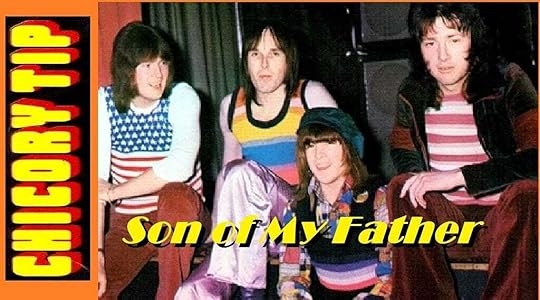
The 70s
Tangerine Dream is considered to be the first all-synth Rock band, known for performing LSD-influenced concerts in thousand-seat cathedrals. They would be on the first wave of German KrautRock in the early 1970s. Another KrautRock band, Kraftwerk became a worldwide sensation with their two seminal synth albums Autobahn and Trans-Europe Express. In England and the US, synth music was advanced by Brian Eno, Pink Floyd, and other Rock musicians. This set the stage for the SynthPop/NewWave/Post Punk/Dance Pop explosion of the 80s that was so well documented on early Mtv.
 Jean Michel Jarre
Jean Michel JarreThe 80s
There’s really nothing too interesting about Synthpop after that — unless you are into big hair, new wave make-up, nursery rhymes put to synthesizers, and a rash of bands that coupled geeky male keyboardists with sexy/cool femme fatales like the Eurythmics, Yaz, Berlin, Missing Persons, and the Human League. Eventually, synthpop merged into asinine ambient rock and post-rock, but during its heyday, there were a few synth-pop acts of note, including Gary Numan, Flock of Seagulls, Heaven 17, M, Vince Clark (of Depeche Mode, Yaz, and Erasure), Orchestral Maneuvers in the Dark, Devo and the Frenchman Jean Michel Jarre.
October 6, 2023
woke warriors finally bring social justice to the breakfast table

Billy Kersands
He was the Michael Jackson of the Reconstruction Era. A dancer/singer/actor/musician from Louisianna, Billy Kersands (1842–1915) appealed equally to white and black audiences alike. He was the first crossover artist in American pop history, and he toured all over America and Europe. He earned fees as high as his white counterparts, and nearly 100 years before MJ peddled his own pop songs to advertise Pepsi-Cola to Mtv viewers, Billy Kersands became the first pop artist to marry one of his songs to a commercial product. The song was titled “Old Aunt Jemima” which was composed in 1875 with lyrics that were adapted from “slave songs” (such as field hollers and work songs). Kersands performed “Old Aunt Jemima” thousands of times during his career and by 1890 the song was so popular that the R.T. Davis Milling Company (of St. Louis, Missouri) wanted to use Kersand’s Aunt Jemima character to create their logo. R.T. Davis hired former slave Nancy Green (1834–1923) to represent “Aunt Jemima” in an advertising campaign that debuted as an in-person character at the 1893 World’s Exposition in Chicago. Green was such a talent that she was awarded a medal and a certificate by fair officials for her showmanship as she sang songs, cooked pancakes, and told stories. Green had found her calling and she would portray Aunt Jemima for the rest of her life. As she became a pop star, she used her status to become one of the first African-American missionaries. Her fame and fortune allowed her to become a successful advocate against poverty. She gave speeches in favor of equal rights for individuals in Chicago.
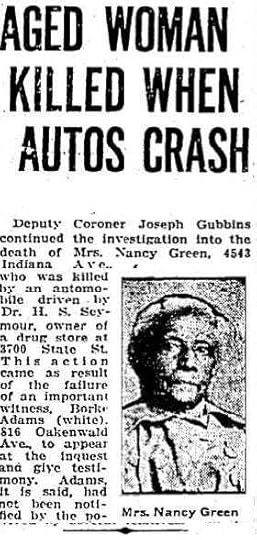
The lives and successes of Kersands and Green were studied by historians throughoutt the decades. They were championed as African American artists who made significant contributions to the American Entertainment Industry, until… 2020. As the world was hit by a pandemic, suddenly a small group of mostly white, middle-aged women decided to embark on a campaign that would change Green and Kersands’ place in history. Instead of celebrating the achievements of Nancy Green and Billy Kersands as African American pioneers in the field of commercial entertainment, a mainstream-media virtue signaling movement basically dismissed their contributions to American culture.
This campaign by “woke” virtue signalers led to the Quaker Oats company abolishing their century-old logo of Aunt Jemima. Well, first they body-shamed Aunt Jemima and reworked her image into a much thinner likeness. Then they just did away with the logo all together. Their message was clear: in 2020 cancel culture, a strong black woman of her time like Nancy Green serving as the logo for Aunt Jemima is taboo. Yet at the same time, the image of a strong modern black man like Michael Jordan as the logo for Nike is celebrated. Which begs the question: If woke warriors’ argument is that Aunt Jemima is offensive because her image paints black women in a “mammy” stereotype, then how is portraying black men as basketball players any better?
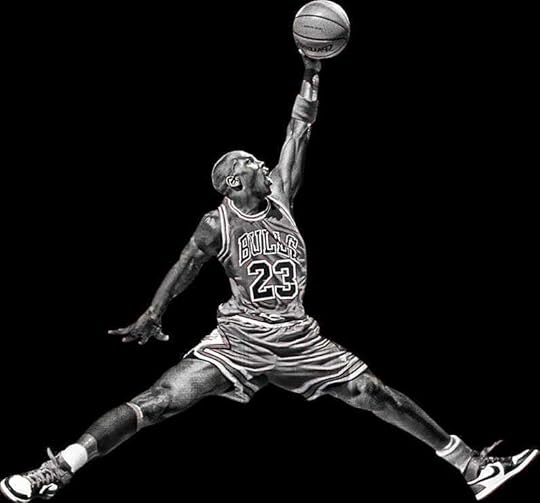
Just prior to Quaker Oats’s attempts to erase Aunt Jemima from the American consciousness, Land-O-Lakes Butter attempted the same with the Land-O-Lakes maiden, Mia. Mia had adorned their packaging since 1928. In 1952, Native American illustrator Patrick DesJarlait’s depiction of Mia replaced the previous image. DeJarlait added Ojibwe floral motifs to her regalia and gave Native women a “visual, tangible connection to their identities as Native women” according to Dejarlait’s son. The attempt to erase her image from history not only hurt Native women but undermined the accomplishments of a Native American artist.
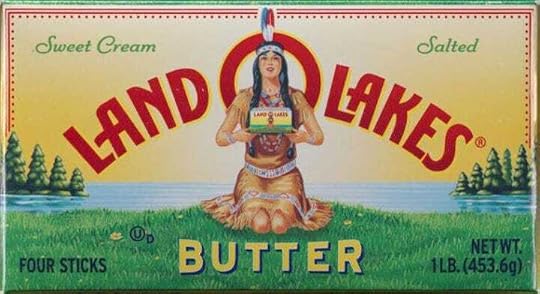
The bottom line though, is this: it’s a free country. If you have a product then you should be able to use any logo, slogan, name, etc that you want. If you want to call it Mother Fucker Baby Killer pancake mix, then by all means — go for it. However, the buying public has the last say in the matter, and the consumer decides whether or not to purchase the product. So, let’s be real — Quaker Oats and Land-O-Lakes didn’t change their logo because they were deeply concerned about racial issues. They did it to appease white guilt and to keep up appearances — which is directly related to their profits. And let’s not pretend that this change did ANYTHING meaningful in terms of racial issues. In fact, all it really did was sweep history under the rug. And that is NOT how you evolve or improve as a society. For better or worse, minstrel shows are a part of our history. Blackface and slavery are a part of our history. The genocide of Native Americans is a part of our history. And we are not going to learn from our past mistakes if we don’t own up to them and confront them in an open and honest manner.
Senator John Lewis seemed to understand that. Prior to passing away just 3 months before the 2020 election, Lewis made a statement regarding the push to re-name the Edmund Pettus Bridge — the bridge that has come to symbolize the struggles of the Civil Rights Movement of the 1960’s. In March of 1965, Lewis was at the front of the march for voting rights when he took the step toward crossing the bridge. Violence ensued, and in an incident that has come to be called Sunday Bloody Sunday, Lewis got his head cracked open, beaten nearly to death, and arrested in front of the bridge that was dedicated to Edmund Pettus.
Edmund Pettus had been a decorated Confederate general and a leader of the Alabama Ku Klux Klan. Despite this history, in fact because of this history, John Lewis argued to keep the name of the bridge as a reminder of what had happened there. Lewis wrote:
‘Renaming the bridge will never erase its history. Instead of hiding our history behind a new name we must embrace it — the good and the bad. The historical context of the Edmund Pettus Bridge makes the events of 1965 even more profound.”
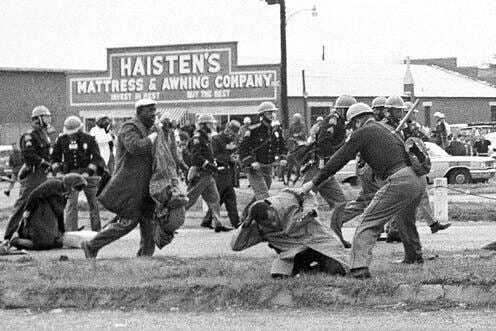
John Lewis getting beaten by cops in Selma Alabama
That is the same sentiment that Quaker Oats should have used in regard to Aunt Jemima. Instead they allowed Aunt Jemima to become another casualty of the cancel culture crimes of the Corona Craze.
[image error]old aunt jemima, oh, oh, oh

Billy Kersands
He was the Michael Jackson of the Reconstruction Era. A dancer/singer/actor/musician from Louisianna, Billy Kersands (1842–1915) appealed equally to white and black audiences alike. He was the first crossover artist in American pop history, and he earned salaries nearly as he toured all over America and Europe. He earned fees as high as his white counterparts. And nearly 100 years before MJ peddled his own pop songs to advertise Pepsi-Cola to Mtv viewers, Billy Kersands was the first pop artist to marry one of his songs to a commercial product. The song was titled “Old Aunt Jemima” which was composed in 1875 with lyrics that were adapted from “slave songs” (such as field hollers and work songs). Kersands performed “Old Aunt Jemima” thousands of times during his career and by 1890 the song was so popular that the R.T. Davis Milling Company (of St. Louis, Missouri) wanted to use Kersand’s Aunt Jemima character to create their logo. R.T. Davis hired former slave Nancy Green (1834–1923) to represent “Aunt Jemima” in an advertising campaign that debuted as an in-person character at the 1893 World’s Exposition in Chicago. Green was such a talent that she was awarded a medal and a certificate by fair officials for her showmanship as she sang songs, cooked pancakes, and told stories. Green found her calling and would portray Aunt Jemima for the rest of her life and used her fame and fortune to become one of the first African-American missionaries. Her fame and fortune allowed her to become a successful advocate against poverty as she gave speeches in favor of equal rights for individuals in Chicago.

The lives of successes of Kersands and Green were studied by historians throughoutt the decades and championed as African American artists who made significant contributions to the American Entertainment Industry, until… 2020. With the world hit by a pandemic, suddenly a small group of mostly white, middle-aged women decided to embark on a campaign that would change Green and Kersands’ place in history. Instead of celebrating the achievements of Nancy Green and Billy Kersands as African American pioneers in the field of commercial entertainment, a mainstream-media virtue signaling movement basically dismissed their contributions to American culture.
This campaign by “woke” virtue signalers led to the Quaker Oats company abolishing their century-old logo of Aunt Jemima. Well, first they body-shamed Aunt Jemima and reworked her image into a much thinner likeness. Then they just did away with it all together. Their message was clear: in 2020 cancel culture, a strong black woman of her time like Nancy Green serving as the logo for Aunt Jemima is taboo, but an image of a strong modern black man like Michael Jordan as the logo for Nike is celebrated. If the argument is that Aunt Jemima is offensive because the image paints black women in a “mammy” stereotype, then how is portraying black men as basketball players any better?

Just prior to Quaker Oats’s attempts to erase Aunt Jemima from the American consciousness, Land-O-Lakes Butter attempted the same with the Land-O-Lakes maiden, Mia. Mia had adorned their packaging since 1928. In 1952, Native American illustrator Patrick DesJarlait’s depiction of Mia replaced the previous image. DeJarlait added Ojibwe floral motifs to her regalia and gave Native women a “visual, tangible connection to their identities as Native women” according to Dejarlait’s son. The attempt to erase her image from history not only hurt Native women but undermined the accomplishments of a Native American artist.

The bottom line though, is this: it’s a free country. If you have a product then you should be able to use any logo, slogan, name, etc that you want. If you want to call it Mother Fucker Baby Killer pancake mix, then by all means — go for it. However, the buying public has the last say in the matter, and the consumer decides whether or not to purchase the product. So, let’s be real — Quaker Oats and Land-O-Lakes aren’t changing their name and/or logo because they are deeply concerned about racial issues. They are doing it to appease white guilt and to keep up their profits. And let’s not pretend that this change is going to do ANYTHING meaningful in terms of racial issues. In fact, all it really does is sweep history under the rug. And that is NOT how you evolve or improve as a society. For better or worse, minstrel shows are a part of our history. Blackface and slavery are a part of our history. The genocide of Native Americans is a part of our history. And we are not going to learn from our past mistakes if we don’t own up to them and confront them in an open and honest manner.
Senator John Lewis seemed to understand that. Prior to passing away just 3 months before the 2020 election, Lewis made a statement regarding the push to re-name the Edmund Pettus Bridge — the bridge that has come to symbolize the struggles of the Civil Rights Movement of the 1960’s. In March of 1965, Lewis was at the front of the march for voting rights when he took the step toward crossing the bridge. Violence ensued, and in an incident that has come to be called Sunday Bloody Sunday, Lewis got his head cracked open, beaten nearly to death, and arrested in front of the bridge that was dedicated to Edmund Pettus.
Edmund Pettus had been a decorated Confederate general and a leader of the Alabama Ku Klux Klan. Despite this history, in fact because of this history, John Lewis argued to keep the name of the bridge as a reminder of what had happened there. Lewis wrote:
‘Renaming the bridge will never erase its history. Instead of hiding our history behind a new name we must embrace it — the good and the bad. The historical context of the Edmund Pettus Bridge makes the events of 1965 even more profound.”

John Lewis getting beaten by cops in Selma Alabama
[image error]October 2, 2023
my heart was going boom-boom-boom

The title of Peter Gabriel’s 1977 debut solo single “Solsbury Hill” is in reference to the small flat-topped hill (that peaks at about 625 feet) where Gabriel had his epiphany to quit Genesis — the Progressive Rock band that he founded — and pursue a different path in a solo career. Gabriel found himself at the site of an Iron Age fort relic sitting on that countryside hill in rural England, contemplating his frustrations with his band. He looked out on the River Avon, taking in the view of the city of Bath and the natural landscape surrounding it. He could see the remains of a medieval field system. The hill itself was believed to be the location of the Battle of Badon from the Belgic Invasion of Britain. There, the fight between the Britons (led by the legendary King Arthur) and the Saxons led to a period of occupation after several huts were burnt down and the rampart was overthrown. The site was soon abandoned and never to be reoccupied.
Appropriately, Gabriel contemplated his own battles as he mediated atop the hill. He had recently been through the battle of writing the classic Prog Rock album The Lamb Lies Down on Broadway with his bandmates in Genesis — a battle that was escalated by the pregnancy of Gabriel’s wife which required Gabriel to take long treks back and forth between the band’s location in rural England and Gabriel’s home in London where his wife was. Consequently, Gabriel was absent during much of the writing of the album — which rubbed the other band members the wrong way. But atop that hill, Gabriel’s moment of decision came to him as he stood looking out at the beautiful historic landscape. His battle to prioritize his family while continuing to express his creative muse was now calling him to set out on his own. His heart was going “Boom, boom, boom” as he realized what direction he had to take.
Many years later, in the twilight of his career, Gabriel included recordings of the natural sounds atop Solsbury Hill to form the track “A Quiet Moment” on his 2011 album New Blood, once again memorializing that pivotal moment in his life.

lyrics to “ Solsbury Hill ”:
Climbing up on Solsbury Hill
I could see the city light
Wind was blowing, time stood still
Eagle flew out of the night
He was something to observe
Came in close, I heard a voice
Standing, stretching every nerve
Had to listen, had no choice
I did not believe the information
Just had to trust imagination
My heart going boom, boom, boom
“Son”, he said, “grab your things, I’ve come to take you home”
To keep in silence I resigned
My friends would think I was a nut
Turning water into wine
Open doors would soon be shut
So I went from day to day
Though my life was in a rut
’Til I thought of what I’ll say
Which connection I should cut
I was feeling part of the scenery
I walked right out of the machinery
My heart going boom, boom, boom
“Hey”, he said, “grab your things, I’ve come to take you home”
(Hey, back home)
When illusion spin her net
I’m never where I want to be
And liberty she pirouette
When I think that I am free
Watched by empty silhouettes
Who close their eyes but still can see
No one taught them etiquette
I will show another me
Today I don’t need a replacement
I’ll tell them what the smile on my face meant
My heart going boom, boom, boom
“Hey”, I said, “you can keep my things, they’ve come to take me home”
who will save rock n roll?
- Ed Wagemann's profile
- 67 followers



